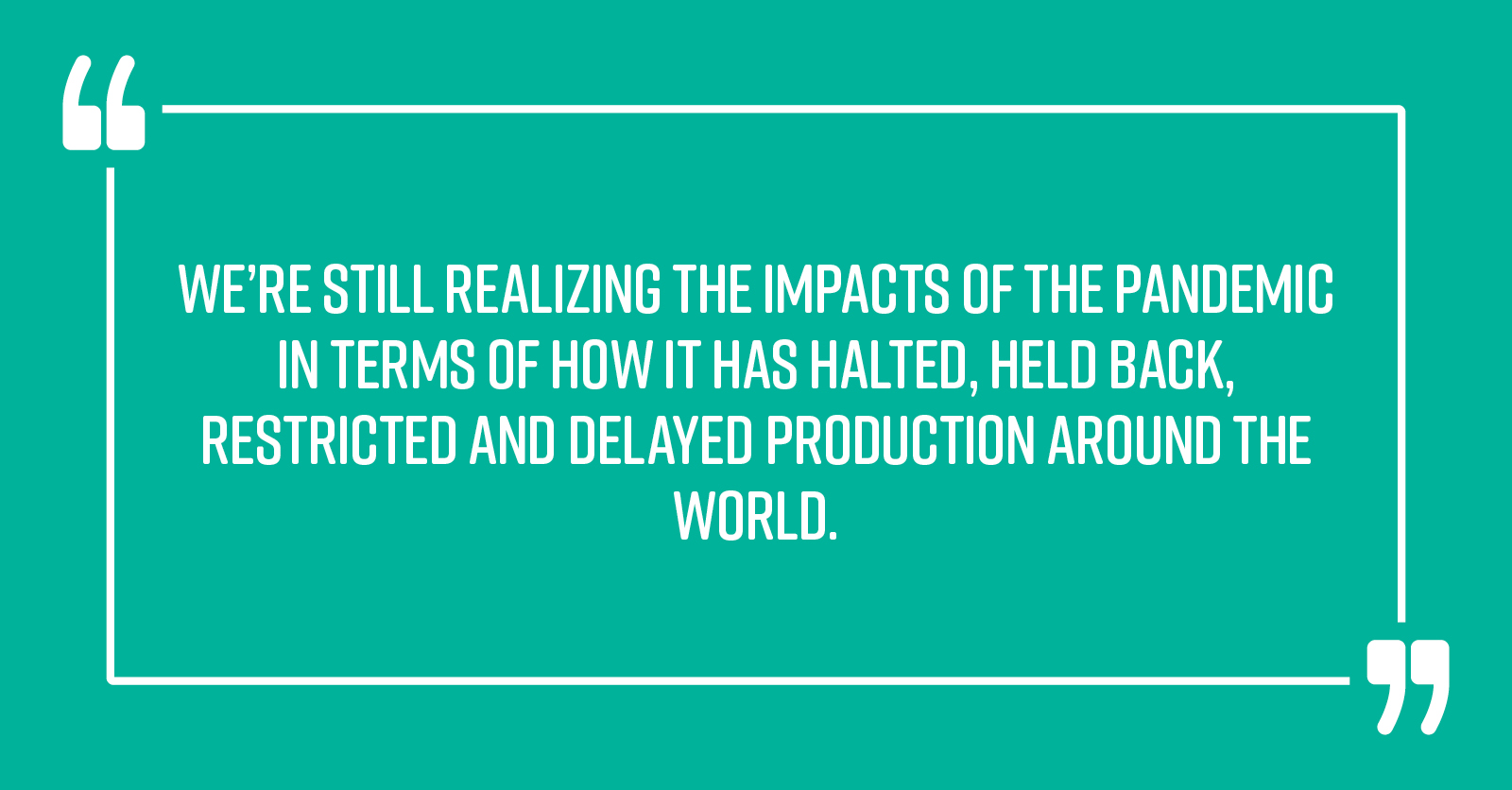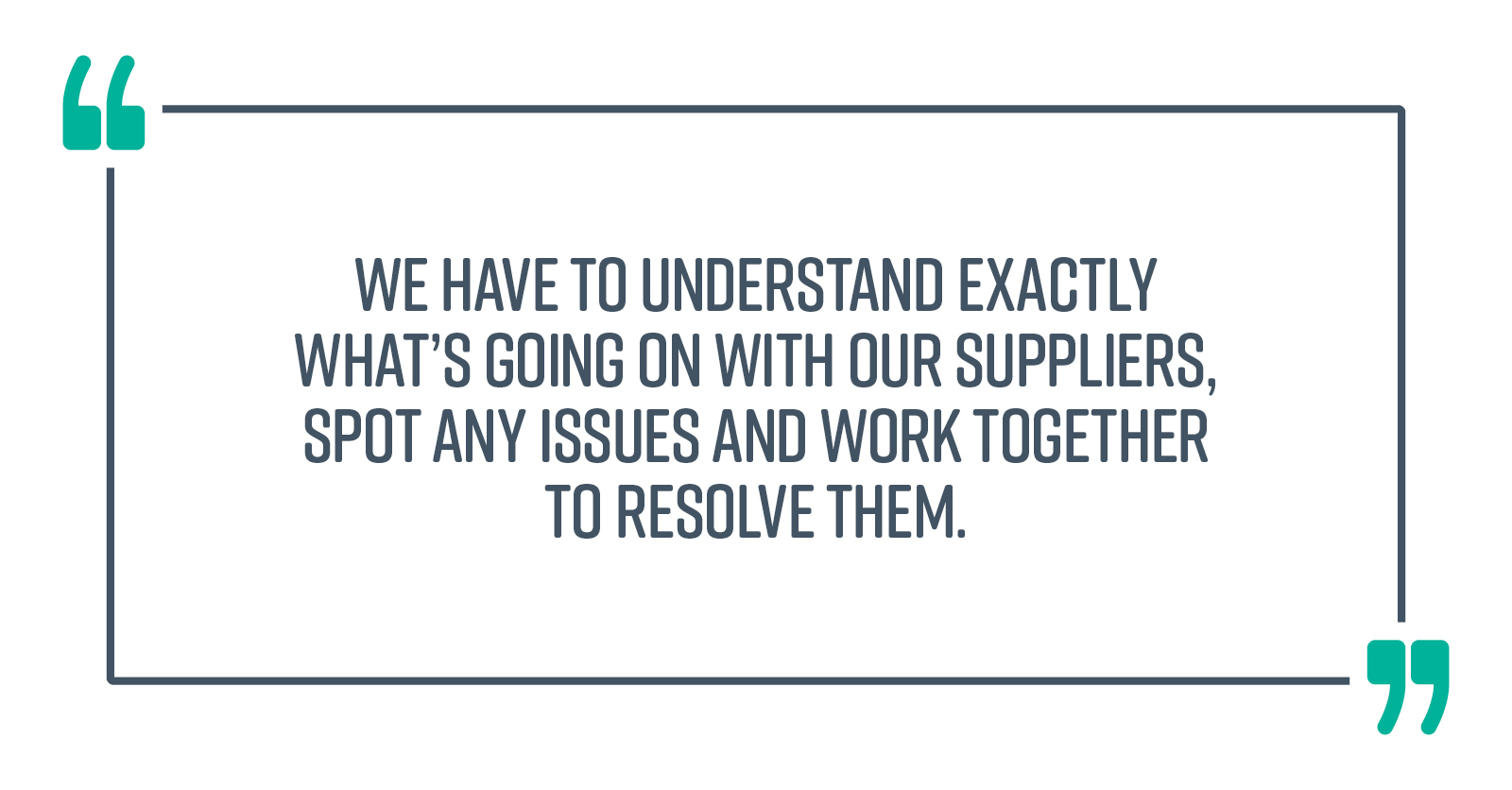Jonathan O’Brien considers procurement within an inflationary environment and suggests ways to cope with unparalleled changes and increased expenditure. How can we renegotiate with existing suppliers or break away and form new relationships?
Today, we’re seeing unprecedented changes in our supply chains with UK issues ranging from domestic goods through to raw materials. Things seem to be getting more expensive too. But what exactly is going on?
The perfect storm
Recent circumstances have created the perfect storm. First, Covid has driven changes in our global supply base that will never be undone. As companies have failed, downsized, scaled back, or even closed, others have restructured to adopt the new ‘work from anywhere’ or hybrid model. In many cases, there are hubs for manufacturing and services while the rest of the company works elsewhere. We’re still realizing the impacts of the pandemic in terms of how it has halted, held back, restricted and delayed production around the world.

Brexit is another significant issue that’s changed how things can be imported and, indeed, what sorts of things are being moved around.
We’re also seeing geopolitical changes. Russia’s invasion of Ukraine triggered a global condemnation and backlash against Russia, and the start of nations and organizations figuring out how to move away from any sort of reliance on Russia within supply chains. This is not straightforward in many industries that had become dependent upon Russian energy, agriculture and minerals. This is on top of the pre-war gas shortage as a result of Russia scaling back supply and effectively holding Europe to ransom, prompting companies to shut down production, driving energy price hikes. It is clear there will be many more future changes as countries begin to get more territorial. Protectionism is here to stay.
Furthermore, huge delays were caused when the Evergiven tanker got stuck in the Suez Canal last year and these have taken many months to resolve. Even now, although the containers have arrived at the ports, there are still residual delays because there isn’t the capacity in the road haulage system to get them where they need to be. Some ports are now fuller than they should be and, as a result, some products are not on the shelves. Add to this the problem of suppliers holding retailers to ransom over price increases, and the ongoing global shortage of truck drivers, and we have the perfect storm.
Globalization
Globalization started back in the 1980s and the ability to drive world trade was soon established. It became possible to source from low-cost countries where labor was cheaper and there were fewer rules. Cheap imports shipped from China would arrive in the UK and the US in three weeks and this logistical engine worked beautifully for many years. But this approach brings too much risk and issues with security of supply.
During the pandemic, in the UK the NHS couldn’t get scrubs or face masks, consumable items sourced from China. Suddenly, the idea of relying on China completely changed because the source became unreliable. As a result, confidence was lost in foreign suppliers and UK companies were asked to start making these items.
When things are great, nobody worries. But a number of crises have caused companies to question that and we have also seen price hikes associated with global sourcing.
Sustainability
We used to not care about the treatment of labor in a Malaysian factory, or that our Indian suppliers were powered by coal-based energy. But now we do. And companies are changing the way they think about reducing their carbon footprint and consumption of resources in the supply base. That has a cost. As a result, we are re-evaluating our global supply chains and questioning if globalization is still a good thing.
Globalization is not dead, but it’s definitely on the ropes. And it’s being considered on a case by case basis by organizations who are now thinking, ‘Should we continue with the global supply base approach or look at localization?’
In the UK, we’re also seeing vertical integration where, instead of sourcing from suppliers, you do it yourself and bring the production facilities into your organization to have full control. As localization and vertical integration return, ‘slowbalization’ is the new globalization.
Inflation
Things are going to get more expensive. People made a lot of money on the back of Covid and supply chain shortages and now, rising costs of raw materials, energy, labour and general inflation, mean procurement are busy fending off price increases from all quarters. Our job in procurement is to cut through this to figure out what increases we can and should not accept and how we might be able to counter this. Clearly, a supply shortage will drive up the price if there is more demand than supply. The basic principles apply. The costs of raw materials are also increasing, partly because of shortages, but we are also witnessing the start of global resource scarcity.
Logistics are getting more expensive. Some commentators suggest the cost of global shipping has increased six-fold. Others put it closer to 10. Will it return to what we know last year? Probably not, but it will adjust. High shipping costs are here to stay. What is more, when a shipping container is stuck at a port, if you don’t pick it up on time, put it on your lorry and take it to where it needs to be, you have to pay for the privilege. Known as ‘demurrage’, the charge is likely to be incurred if you have logistics issues because you can’t get the truck drivers.
Making the supply chain sustainable may also prove expensive. It costs to move away from some low-cost sources. This drives up prices and causes inflation.
Supplier negotiations
There you are in procurement and your suppliers are saying, ‘We need to pass this cost increase on to you’. Now, remember, there will be situations where suppliers are in long-term agreements where prices are fixed or there is a mechanism for how price works over the contract term. There may or may not be a method for changing that price. But, regardless of what the contract says, if you get to a point where it’s unsustainable, you’ve got to act.
While procurement functions are grappling with security of supply, suppliers are saying, ‘I want a price increase’ and the organization is saying, ‘We can’t pass this on to our customer.’ As the margins are squeezed, everybody’s looking at procurement, asking, ‘What are you going to do about this?’
Prices will rise to the end customer. That is inevitable. The only negotiation approach is first to understand the risk. If we do nothing, will that have an impact on our security of supply?
We then need to try to delay it as much as possible, ‘OK, we understand the position. Can we look at something in two months?’ Smart suppliers will say, ‘No’, but these methods buy time. And part of this process is understanding how real the supplier’s need for the price increase is. The more we can do to see how serious they are, the more we can gauge whether we have to do something.
We have to probe but, ultimately, you may get to a point where your supplier is serious about driving a cost increase. If you don’t listen, bad things are going to happen.
In this case, it’s about quantifying the impact. If they’re asking for a 5% increase, what proportion of those costs make up the overall price? A 5% rise of something that is 20% of total costs equates to a 1% increase. At this stage, we may wish to review whether using this supplier is the right way to source moving forward. It forces the debate which gives us leverage, but only if there are other suppliers available to us that can offer security of supply.
People talk about open book pricing but, in reality, it’s hard for a procurement person to see the true costs. While you can analyze labor and materials, costs can be hidden in overheads. Some things are fairly generic and could be sourced from other suppliers, meaning we have choice. In those situations, we’re probably not going to have much of a relationship and can switch supplier. But, where we need a relationship, such as where we’ve outsourced part of what we do, or in a critical area of supply, we must work together. That’s where we need the relationship and to have that sort of transparency because, the chances are, we can’t switch.
We have to look at the type of supplier, how important they are, how difficult the marketplace is and, ultimately, how much leverage exists. This will help us make decisions about how we’re going to negotiate and whether we will accommodate or reject cost increases.

Takeaways
Amidst extraordinary global developments and unparalleled inflationary pressures, here are five things we can do to preserve security of supply and manage our supplier relationships effectively.
The first is, what is the risk? Where is the risk? We might not be able to predict a pandemic, but we can identify the things that we buy as categories of spend. So, using the principles of category management, we can determine where there is risk in the supply chain due to security of supply. This should include intense risk analysis in terms of what we buy, whom we buy from and the supply chains involved.
The second step is we need to understand the macro picture. Some category management and SRM tools can help here, such as simple political, economic, sociological, technological, legal and environmental (PESTLE) analysis and Porter’s five forces tool. These will help us to assess what is happening in the world that we need to understand and respond to.
Third, we have to get close to our supply chains. Procurement traditionally hasn’t done this. But now, more than ever, we need to understand our supply chains and map them based on risk.
Next, we need to get close to our suppliers in a slightly different way. Supplier relationship management means a whole variety of different things, from managing a contract to driving a strategic collaborative relationship and everything in between. We have to understand exactly what’s going on with our suppliers, spot any issues and work together to resolve them.
Finally, it’s simply not about price and cost any more. Right now, procurement people are prioritizing the security of supply. It is this approach, together with a keen focus on sustainability and innovation, that will help us to navigate through the biggest period of change our industry is ever likely to see.

